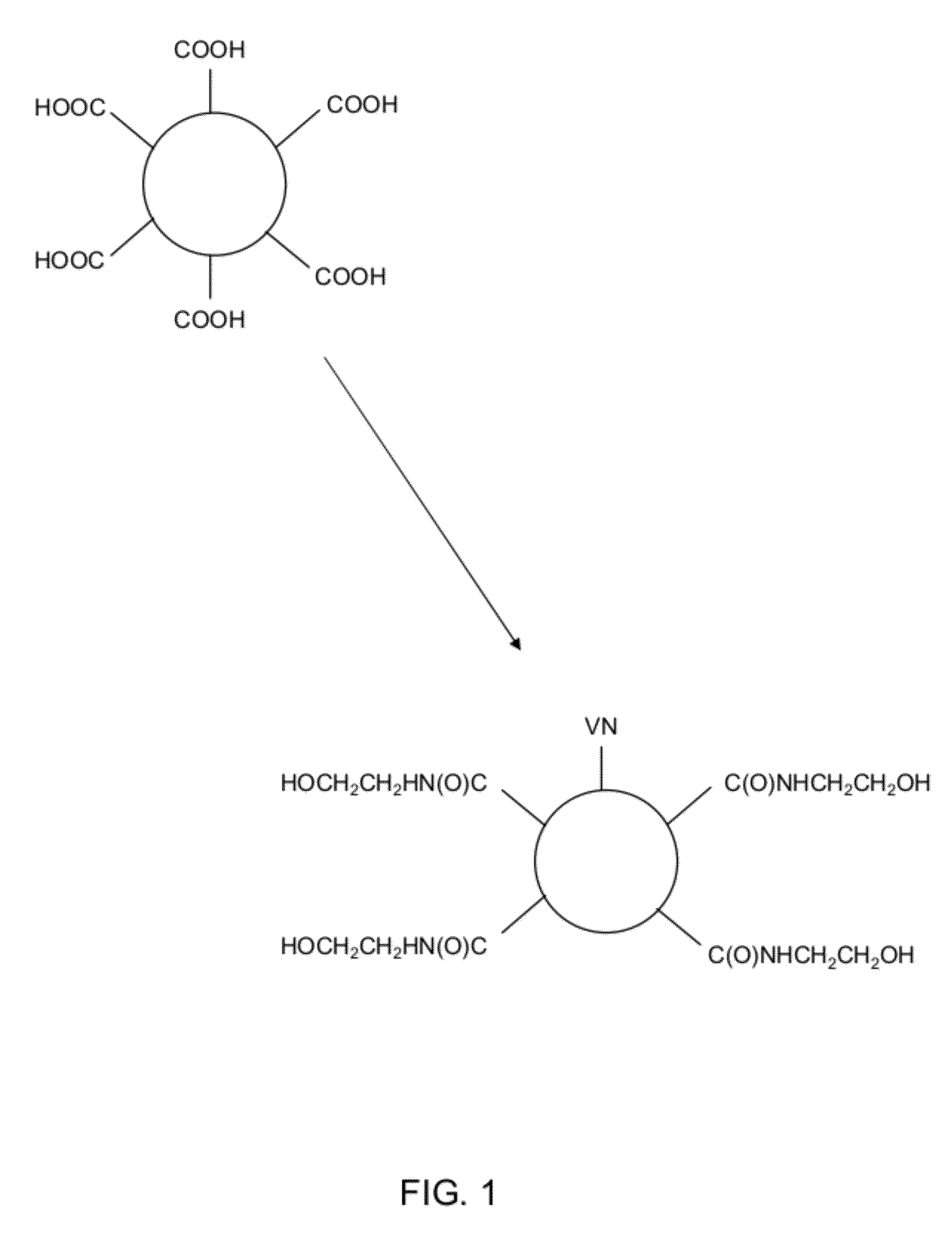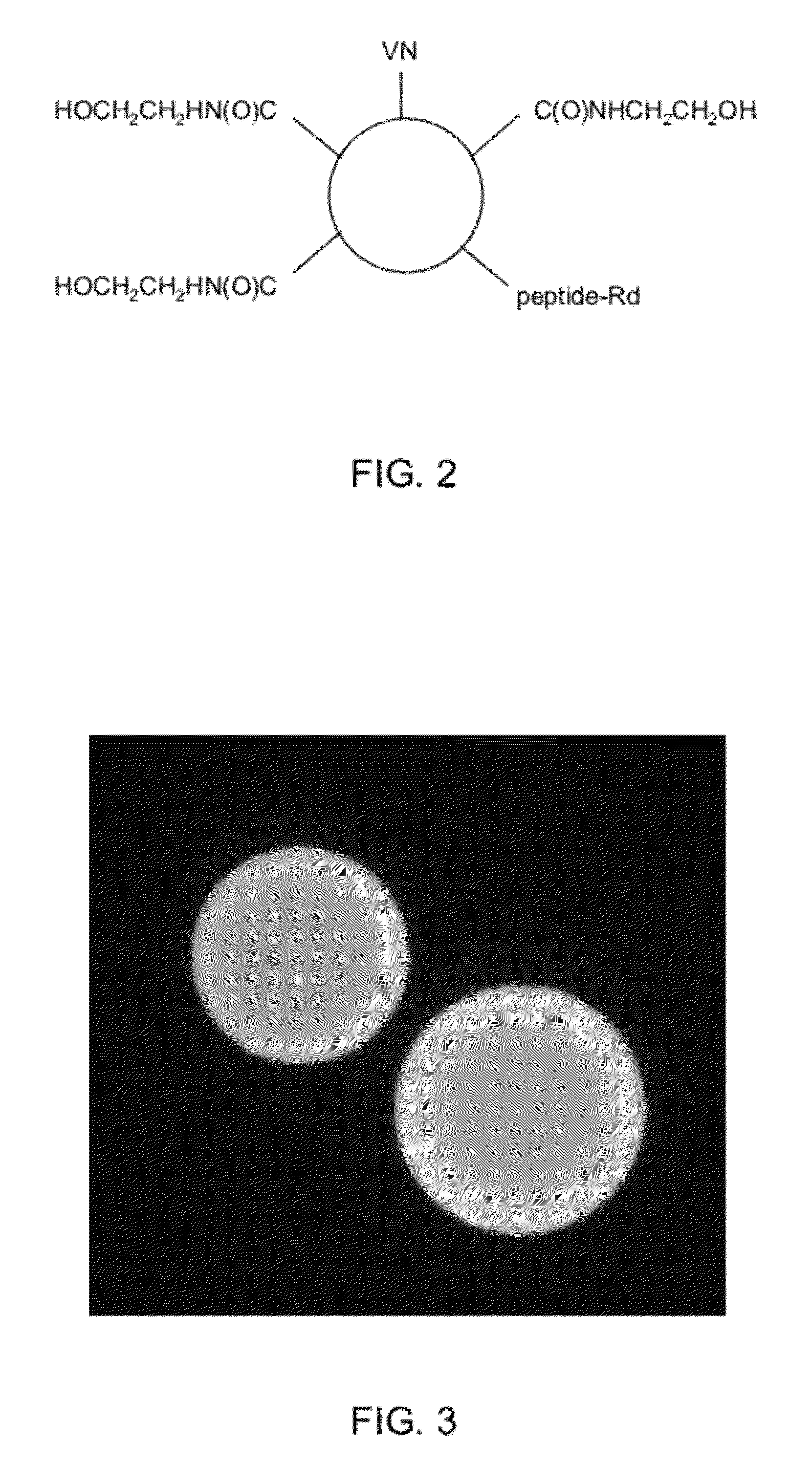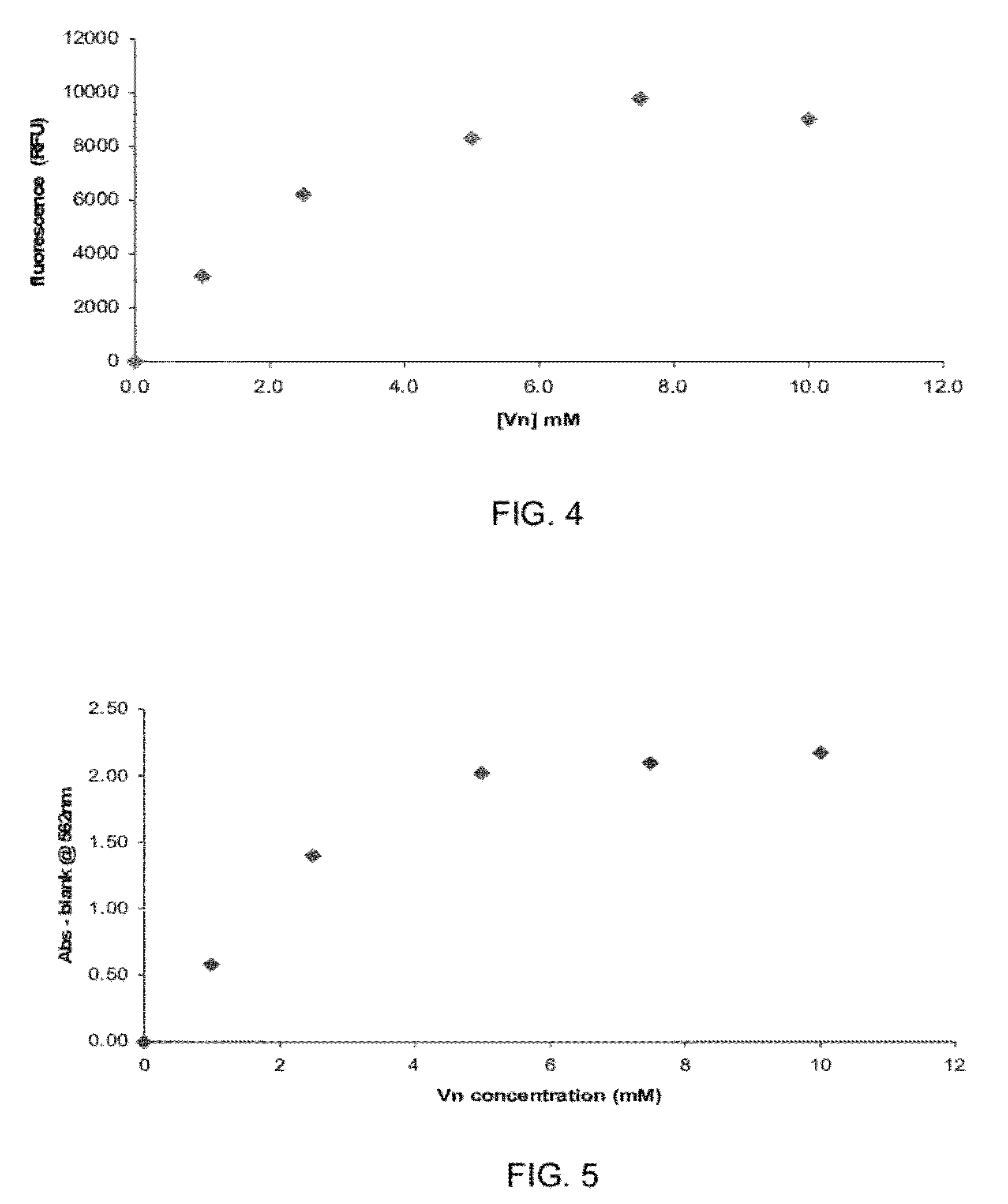Synthetic polysaccharide microcarriers for culturing cells
a cell culture and polysaccharide technology, applied in the field of cell culture microcarriers, can solve the problems of affecting affecting the stability of the cell culture process, and altering the equilibrium water content, so as to reduce the hydrophillicity of the microcarrier, reduce the adhesion of cells, and the effect of sufficient strength
- Summary
- Abstract
- Description
- Claims
- Application Information
AI Technical Summary
Benefits of technology
Problems solved by technology
Method used
Image
Examples
example 1
Vitronectin (VN) Conjugation to Dextran Beads
[0095]100 milligrams dry carboxymethylated dextran beads, CM-Sephadex® C-50 beads ([CAS Number 9047-08-], available from GE Healthcare), were weighed in an plastic tube and suspended in 10 milliliters of 200 mM EDC and 50 mM NHS aqueous solution. The suspension was left for 30 minutes to swell the beads and to activate the carboxylic acid groups. Then the activated microcarriers were collected by centrifugation and rinsed three times with 10 ml of deionized water. After rinsing, they were resuspended in 15 ml borate buffer pH 9.2 containing 61.2 mg of vitronectin peptide (Ac-Lys-Gly-Pro-Gln-Val-Thr-Arg-Gly-Asp-Val-Phe-Thr-Met-Pro-NH2, SEQ ID NO: 1), available from American Peptide Company, Inc., catalog number: 341587) and left to react for 2 hours.
[0096]A general overview of the reaction scheme is shown in FIG. 1, which shows a schematic carboxylated bead reacted with EDC / NHS in water and VN-peptode / borate at pH 9.2 (1) followed by ethan...
example 2
Rhodamine-Labeled Peptide Conjugation to Dextran Beads
[0098]The same procedure as described in EXAMPLE 1 was reproduced except that rhodamine-labeled fluorescent peptide (ref 347678 from American Peptide Company Inc. CA USA, having amino acid sequence 5 / 6TAMRA-Gly-Arg-Gly-Asp-Ser-Pro-Ile-Ile-Lys-NH2, SEQ ID NO. 3) was admixed with vitronectin peptide from EXAMPLE 1. Briefly, activation of the microcarrier was performed as described in EXAMPLE 1 except that 153 microliter of 1 mM rhodamine-labeled peptide was added to 15 ml borate buffer containing 61.2 mg of vitronectin peptide for the conjugation step. The blocking step was done as in EXAMPLE 1. A schematic diagram of a resulting bead in shown in FIG. 2.
[0099]Conjugation of VN and rhodamine-labeled peptide worked well and no non-specific adsorption of the peptides occurred when activation was omitted (data not shown.
[0100]FIG. 3 is a micrographic image showing a fluorescently labeled bead with good uniformity of the grafted peptide...
example 3
RGE Peptide Conjugation to Dextran Beads (Negative Control)
[0104]The same procedure as described in EXAMPLE 1 was reproduced except that RGE-peptide (ref 348454 (ID#RGE) from American peptide Company Inc. CA USA, having amino acid sequence Ac-Gly-Arg-Gly-Glu-Ser-Pro-Ile-Ile-Lys-NH2, SEQ ID NO:4) was utilized instead of the vitronectin peptide from EXAMPLE 1. These microcarriers grafted with a peptide containing an RGE core are noted CMD-RGE and were used as a negative control. The obtained RGE-functionalized microcarrier does not support cell attachment, as expected for a negative control, and indicated that adhesion on VN peptide-conjugated microcarrier is mainly due to peptide-specific adhesion (see FIG. 8). Cell culture conditions are described in more detail below in EXAMPLE 5.
PUM
| Property | Measurement | Unit |
|---|---|---|
| equilibrium water content | aaaaa | aaaaa |
| equilibrium water content | aaaaa | aaaaa |
| pH | aaaaa | aaaaa |
Abstract
Description
Claims
Application Information
 Login to View More
Login to View More - R&D
- Intellectual Property
- Life Sciences
- Materials
- Tech Scout
- Unparalleled Data Quality
- Higher Quality Content
- 60% Fewer Hallucinations
Browse by: Latest US Patents, China's latest patents, Technical Efficacy Thesaurus, Application Domain, Technology Topic, Popular Technical Reports.
© 2025 PatSnap. All rights reserved.Legal|Privacy policy|Modern Slavery Act Transparency Statement|Sitemap|About US| Contact US: help@patsnap.com



